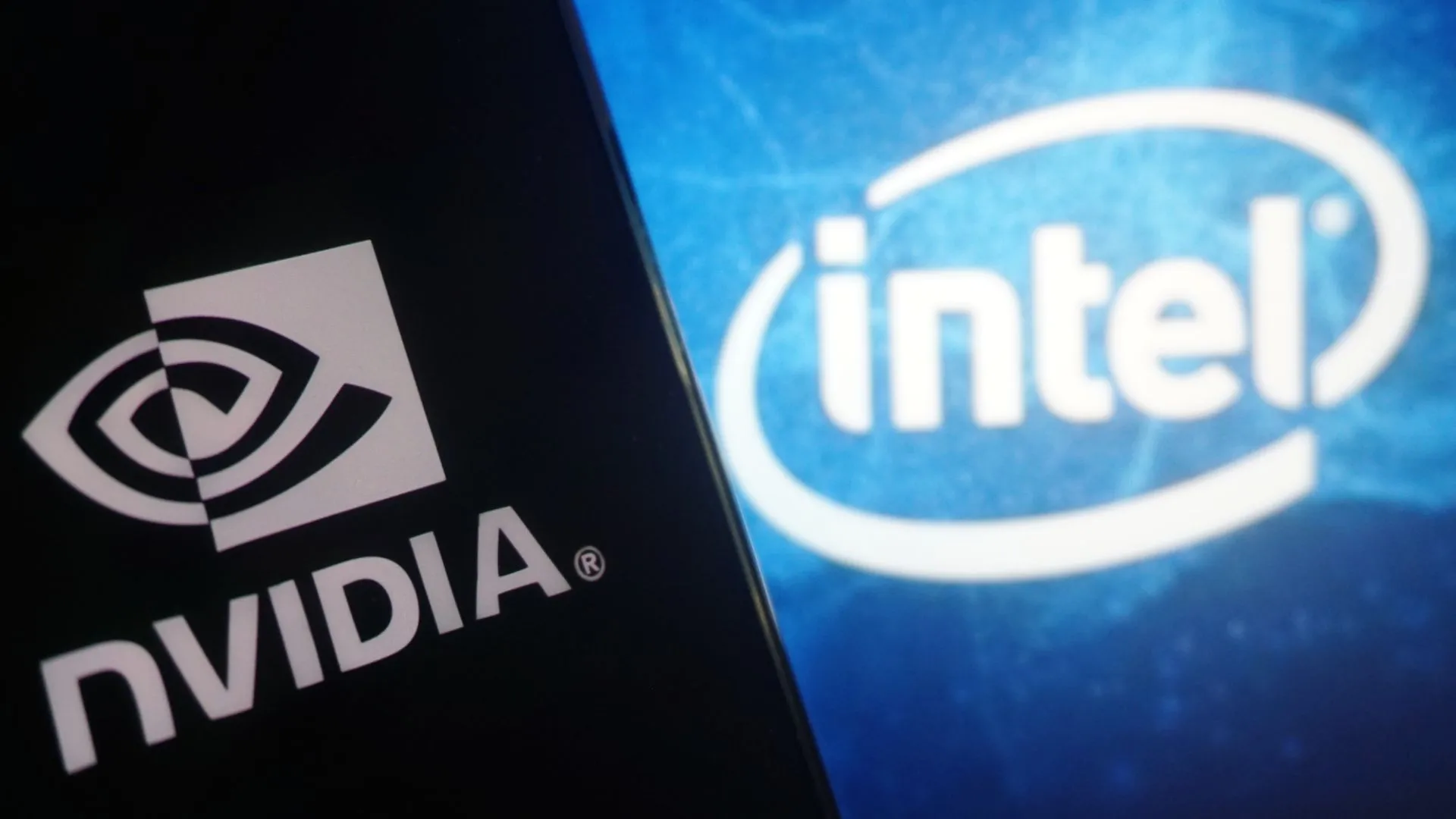
NVIDIA will invest $5 billion in Intel, becoming one of its largest shareholders and striking a partnership to build future data center and PC chips jointly.
The deal marks a major lifeline for Intel, which has struggled for years to regain its footing in the semiconductor industry. Intel’s shares surged 23% on Thursday following the announcement.
The two companies will jointly design multiple generations of products. For data centers, Intel will build custom x86 CPUs that NVIDIA will integrate into its AI infrastructure platforms.
For personal computing, Intel will manufacture x86 system-on-chips with NVIDIA RTX GPU chiplets, aimed at high-performance PCs.
NVIDIA CEO Jensen Huang emphasized the strategic importance of the pact. “AI is powering a new industrial revolution and reinventing every layer of the computing stack — from silicon to systems to software. At the heart of this reinvention is NVIDIA’s CUDA architecture,” Huang said. He added that the collaboration “tightly couples NVIDIA’s AI and accelerated computing stack with Intel’s CPUs and the vast x86 ecosystem.”
Intel CEO Lip-Bu Tan said the tie-up plays to both companies’ strengths. “Intel’s x86 architecture has been foundational to modern computing for decades — and we are innovating across our portfolio to enable the workloads of the future,” he said.
“Intel’s leading data center and client computing platforms, combined with our process technology, manufacturing and advanced packaging capabilities, will complement NVIDIA’s AI and accelerated computing leadership.”
Market impact and risks
NVIDIA’s $23.28 per share investment values Intel below its Wednesday closing price of $24.90 but above the $20.47 that the U.S. government recently paid for its 10% stake.
Earlier this year, Intel also secured a $2 billion investment from SoftBank. Together, these deals strengthen Intel’s balance sheet as it looks to restructure under Tan.
Analysts called NVIDIA’s involvement a turning point. “This is a massive game-changer for Intel and effectively resets its position of AI-laggard into a cog in future AI infrastructure,” said Gadjo Sevilla, senior AI and tech analyst at eMarketer, to Reuters.
The partnership also raises questions for rivals.
Taiwan’s TSMC currently manufactures NVIDIA’s top processors, but Intel could eventually win part of that business. AMD, which competes with Intel in the data center market, also faces pressure from NVIDIA’s backing of its longtime rival.
Future product roadmap
The companies did not disclose exact launch dates for their first joint products. They confirmed that their previously announced product plans remain on track. NVIDIA said the collaboration would extend across “multiple generations” of new platforms.
Under the deal, Intel will design processors that communicate faster with NVIDIA GPUs using proprietary NVLink technology.
This feature is central to AI servers, which rely on linking many chips to handle massive workloads. Currently, NVIDIA only offers such systems using its own CPUs.
Partnering with Intel could expand its server market and put Intel inside more AI infrastructure.
Intel’s Tan said he aims to streamline operations and build new factory capacity only when demand supports it.
With NVIDIA’s investment and partnership, Intel gains both capital and credibility in a market increasingly driven by AI computing.



